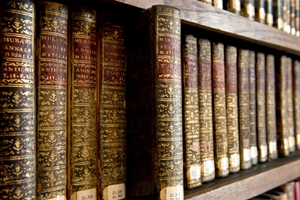Australia’s long and rich history means there are a number of museums and archive locations scattered throughout the country. With each of these buildings holding precious and irreplaceable items from our past, preservation and care is of the utmost importance.
Protecting these items from natural disasters and physical threats is always a constant concern, but more emphasis should be placed on creating a stable ambient environment for storage. Without this key element, deterioration is possible and the country would lose key parts of our history.
In this article, we will investigate the implications of poor building climates on documents and offer a solution to the issue.
Temperature and humidity
Depending on a number of factors including age, which include origin and make-up, a document will respond to an environment in different ways. As well as this, without intensive investigations into a document it can be difficult to determine whether it was made of weak or strong materials and the overall condition of the piece.
However, what is known is the impact that both temperature and humidity can have on paper.
According to the Department of Culture, Arts of Leisure in the UK, dry and hot conditions cause documents to become brittle. In addition, damp and humid conditions promote both mould growth and pests.
The department recommends that museums and archives with precious historical documents ensure the temperature consistently remains within 13-19°C. It’s also important that humidity levels are kept between 45 and 60 per cent.
In addition, documents respond particularly poorly to temperature and humidity fluctuations, which highlights the importance of regular monitoring and data logging.
The past has seen two high profile documents lose quality as a result of poor storage. Both the Treaty of Waitangi in New Zealand and the United States Declaration of Independence have been extensively damaged after being left in boxes and inadequate storage vaults. Although both are on display in museums now, the quality of both documents has been severely affected in the years since their signing.
Saveris solution
To prevent these situations from affecting museums and archives today, it is important to install a sufficient data monitoring system such as testo Saveris.
Saveris is able to constantly monitor any given environment to ensure the levels don’t pass safe limits. Should they, an alarm will sound and alert staff to the problem. If people aren’t on site, email and SMS notifications can be sent to bring the problem to their attention and the issue can be dealt with in a timely manner.









 Reduce cooking oil costs while ensuring quality
Reduce cooking oil costs while ensuring quality Expert knowledge on CO2 monitoring
Expert knowledge on CO2 monitoring Refrigeration knowledge - in 3 modules
Refrigeration knowledge - in 3 modules



